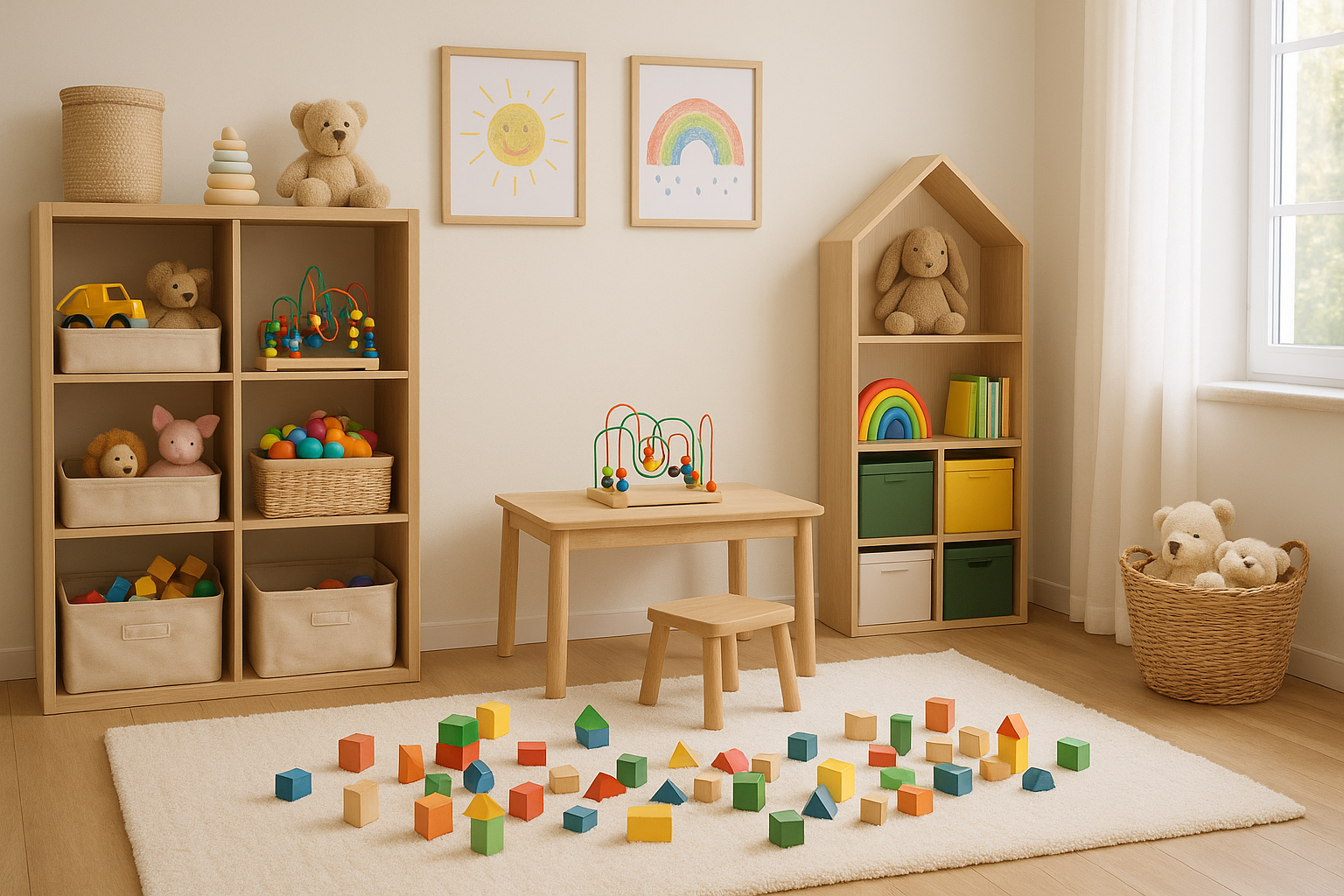Toys are a source of joy, creativity, and learning for children, but for parents, they can also be a source of clutter and chaos. From plush animals and building blocks to craft supplies and board games, toys tend to multiply quickly. Without a proper storage system, play areas can become overwhelming, making it difficult for kids to find what they want and for parents to keep the home tidy.
The good news is that toy storage doesn’t have to mean hiding everything away in a closet. With thoughtful planning and creative solutions, you can organize toys in a way that is functional, accessible for kids, and visually appealing for the whole family.
Understanding the Importance of Toy Organization
A well-organized play area benefits everyone:
- For kids: Toys are easier to find, play sessions are less frustrating, and cleanup becomes a natural habit.
- For parents: Less visual clutter, a more peaceful home environment, and reduced time spent searching for lost pieces.
- For the toys: Proper storage helps preserve condition and prolongs their lifespan.
Establishing a toy storage system early also helps children develop responsibility for their belongings.
Assessing the Space and Needs
Before buying storage furniture or containers, take stock of your space and the types of toys your children own.
- Inventory: List categories of toys—building sets, dolls, art supplies, puzzles, outdoor toys.
- Usage frequency: Keep regularly used toys within easy reach, and store less-used ones higher up or out of sight.
- Space constraints: Identify unused corners, wall space, or furniture that could double as storage.
This initial assessment ensures that your storage choices fit both the physical space and your family’s needs.
Decluttering Before Organizing
Toys accumulate fast, especially with birthdays, holidays, and hand-me-downs. Declutter before you organize:
- Donate toys your child has outgrown.
- Discard broken items or incomplete sets.
- Store sentimental items separately in a keepsake box.
This step not only frees up space but also makes storage more manageable.
Storage Furniture That Doubles as Decor
Choosing storage that looks good in your home is key, especially if the play area is in a shared space like the living room.
Storage Benches
These provide seating and hidden compartments for toys. Perfect for plush animals, costumes, or large toys.
Cube Shelving Units
Cube organizers are versatile and can hold baskets, bins, or open displays for books and toys. The uniform shape creates a neat, modern look.
Ottomans with Storage
Soft, safe, and stylish, storage ottomans are great for small toys and can be moved easily.
Clear Bins for Easy Identification
Clear plastic bins allow children to see what’s inside without opening every container. Label them with both text and pictures for younger kids who can’t read yet.
Group similar toys together—LEGO bricks in one bin, art supplies in another—to make cleanup quick and intuitive.
Rotating Toys to Reduce Clutter
Toy rotation keeps playtime fresh without overwhelming kids with too many options. Store a portion of toys in a closet or under the bed and swap them out every few weeks. This method reduces clutter, extends the novelty of each toy, and encourages deeper engagement.
Using Wall Space for Storage
Walls are often underutilized in play areas but can provide valuable storage:
- Floating shelves for books, puzzles, or decorative toys.
- Pegboards for hanging dress-up costumes, baskets, or art supplies.
- Hanging mesh organizers for stuffed animals or small sports balls.
By taking advantage of vertical space, you keep the floor clear and create a more open environment.
Labeling for Independence
Labels help children learn where each toy belongs, making cleanup a shared responsibility. Use:
- Picture labels for toddlers and preschoolers.
- Color-coded labels for different toy categories.
- Word labels for older children to encourage reading skills.
Consistent labeling ensures toys are returned to their proper place after each play session.
Incorporating Mobile Storage
Rolling carts or wheeled bins allow toys to be easily moved between rooms and stored away when not in use. This is especially helpful for art supplies or building sets that might be used in multiple areas of the house.
Creating Zones in the Play Area
Designating specific zones for different activities keeps the space organized and promotes purposeful play:
- Art zone: Table with drawers for coloring books, crayons, and paints.
- Building zone: Low shelves for blocks and construction sets.
- Pretend play zone: Hooks for costumes, baskets for dolls and props.
- Reading zone: Cozy corner with a bookshelf and cushions.
Zoning makes it easier to return toys to the right place and keeps playtime structured.
Storing Outdoor Toys Efficiently
Outdoor toys like balls, chalk, and ride-on cars also need organization:
- Use mesh bags for balls so they can dry out if wet.
- Install wall hooks in the garage for jump ropes or scooters.
- Keep a weatherproof storage box on the patio for sand toys and water play items.
Maintaining the System
Even the best storage system won’t work unless it’s maintained. Make cleanup part of the daily routine by setting aside 10–15 minutes before bedtime for putting toys away. Encourage kids to take ownership by making it a game or challenge.
Every few months, reassess the toy collection, remove items that are no longer loved or used, and reorganize as needed.
Final Thoughts
Creative toy storage isn’t just about reducing clutter—it’s about creating an environment where children can play freely while learning organization skills. By choosing storage that suits your space, labeling clearly, and making cleanup part of the routine, you can keep the play area functional, safe, and visually appealing.
With the right strategies, toy organization can become a natural part of daily life, benefiting both kids and parents while keeping the home harmonious.

